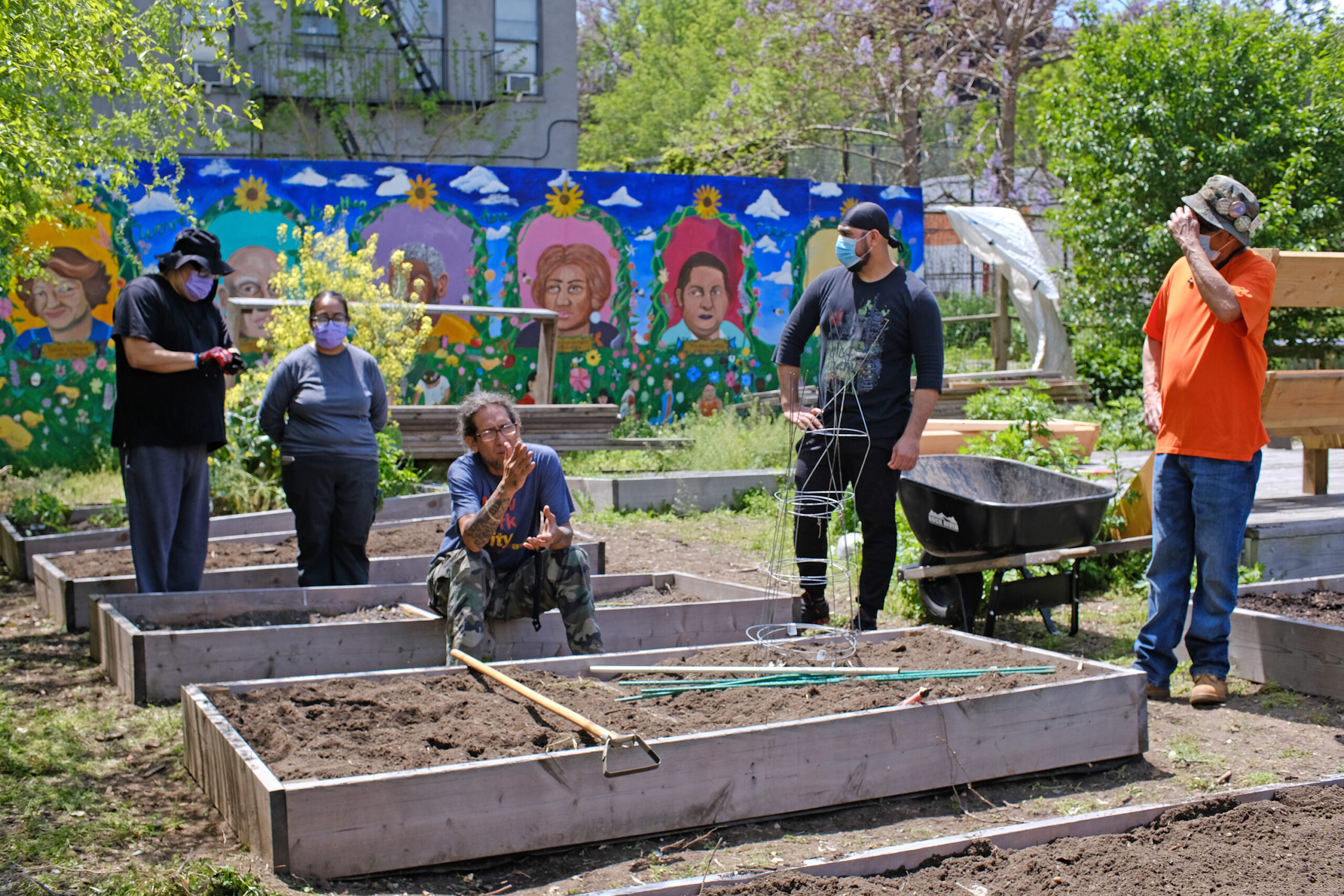As the impact from the pandemic’s first punch gradually diminishes and New York City wrestles with reopening, South Bronx cultural organizations see an uncertain future in the communities they serve.
Elena Martinez, a folklorist who has traced the area’s unique musical and cultural history, says overcoming epic adversity is nothing new here. The instinct to stare down obstacles is ingrained in the DNA of residents who over the past half-century have survived epidemics of arson, crack and government neglect.
In the 1970s, people arranged their lounge chairs on streets amid the rubble of burned out buildings to hear improvised Salsa concerts played by musicians who were born and raised here. Then hip hop followed, with a similar make-do, community-driven spirit.
“They would take over (neglected) parks. People used the devastation to their own end,” Martinez said.
That sense of immediacy is a thing of the past, says Martinez, who now serves as co-artistic director at the Bronx Music Heritage Center in Morrisania.
“There were grass roots movements in a way you can’t do now. You need permits for everything,” she said. But though daily life has become more structured in the Bronx as elsewhere, in part due to technological advances, the resiliency forged in the urgency of earlier days has ushered in a homegrown arts scene strong enough to survive the current crisis, she added.
From Pregones Theater to The Point CDC to the Bronx Documentary Center, local artists are eager to get back to the social networks that have enriched the borough.
“We’re doing stuff online,” Martinez acknowledged. “I’d hate to see this as the wave of the future. Musicians want to perform in front of real people.”
Edwin Pagán, director of communications for Melrose-based housing advocacy powerhouse Nos Quedamos, agrees that it is harder to mobilize now than in decades past. Pagán, a photographer and designer who was raised in the borough’s Crotona Park section and began learning his trade at the Hoe Ave. Boys Club in the 1970s, recalls those days when “people were really hungry. You get cornered, you fight. Now people are a bit more complacent.”
Nos Quedamos, which oversees more than 100 apartment buildings and townhouses across the South Bronx and advocates on behalf of 9,000 tenants, has had some recent funding successes despite the cratering of the city’s economy. One initiative it plans to move forward on soon would provide low-cost wifi for Melrose residents. Another will bring solar panels to three local community gardens.
“We find ourselves in a really interesting time,” said Pagán, who even during the height of the pandemic in April and May rode the Bx21 from his apartment in Morris Park to and from Nos Quedamos’ central office on Melrose Ave. every day. “There’s usually no one there but me and the driver.” At the group’s 754 Melrose Ave. location, he has worked alone to keep its initiatives afloat while other staff worked from home.
Nos Quedamos was prepared for blackouts and floods, he said, “but we never anticipated a pandemic.” Although food distribution is not a service the organization typically provides, they have set up pantries in their buildings because food is the most pressing need,
But Nos Quedamos is looking beyond the immediate crisis, Pagán says, and desperation has taught shoestring-budgeted nonprofits a thing or two about coping in a crisis. Previous to the onset of Covid-19, the neighborhoods’ advocacy organizations “weren’t talking because from 9 to 5 we were feeding the beast.” Now they are.
“It’s heartbreaking that all these people are dying,” he said, but added “I don’t know if in my lifetime I’m going to get this opportunity to do this kind of case study, short of a meteor hitting us. When you work on solutions, you’re in the middle of it.”
Lloyd Ultan, who has been the official Bronx historian as appointed by the Bronx borough president’s office since 1996, has long been affiliated with the Bronx Historical Society, documenting the borough’s rich past and sharing it with the public through tours and lectures. But although the Society is the third-oldest public institution in the Bronx after the Bronx Zoo and the botanical gardens, the public remains generally unaware that it “provides information about where people live and about how we got into the mess we’re in. It’s all very relevant to the lives of the people here today,” says Ultan.
The organization, which runs two historical buildings in the borough, recently received a loan from the federal government, with which it will be able to pay its employees. But the longer term future is murky.
“When the pandemic hit, that cut off just about all (city and state) funds,” he said, but added “some businessmen have given of their time and money” to help stem the tide.
As the poorest county in New York State, he added, “We don’t have a Mrs. Astor or a Mrs. Vanderbilt to say ‘let’s get together and raise 100 million dollars.'”

